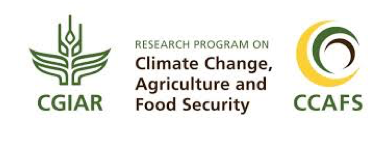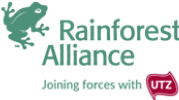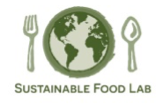Ultimately, climate resilience data is only effective when used to inform business strategy or targeted interventions. Once a company understands the climate risk exposure within a supply chain, identifies priority suppliers, and diagnoses the resilience capacity of these suppliers, targeted resilience interventions can be designed.
Tools to help identify and successfully implement climate smart practices, strategies and enablers
Tailoring CSA to Particular Geographies
In Honduras, CIAT has supplemented maps projecting climate changes to 2050 with information about the economic relevance of coffee for the country, current climate trends, and corresponding actions (practices, strategies and enablers) to support efficient adaptation at different risk levels. Please read the Climate Smart Coffee in Honduras brief for more information on climate risk in Honduras and reach out directly to Christian Bunn (c.bunn@cgiar.org) or Mark Lundy (m.lundy@cgiar.org). And, stay tuned for a similar brief on climate smart coffee in Uganda!
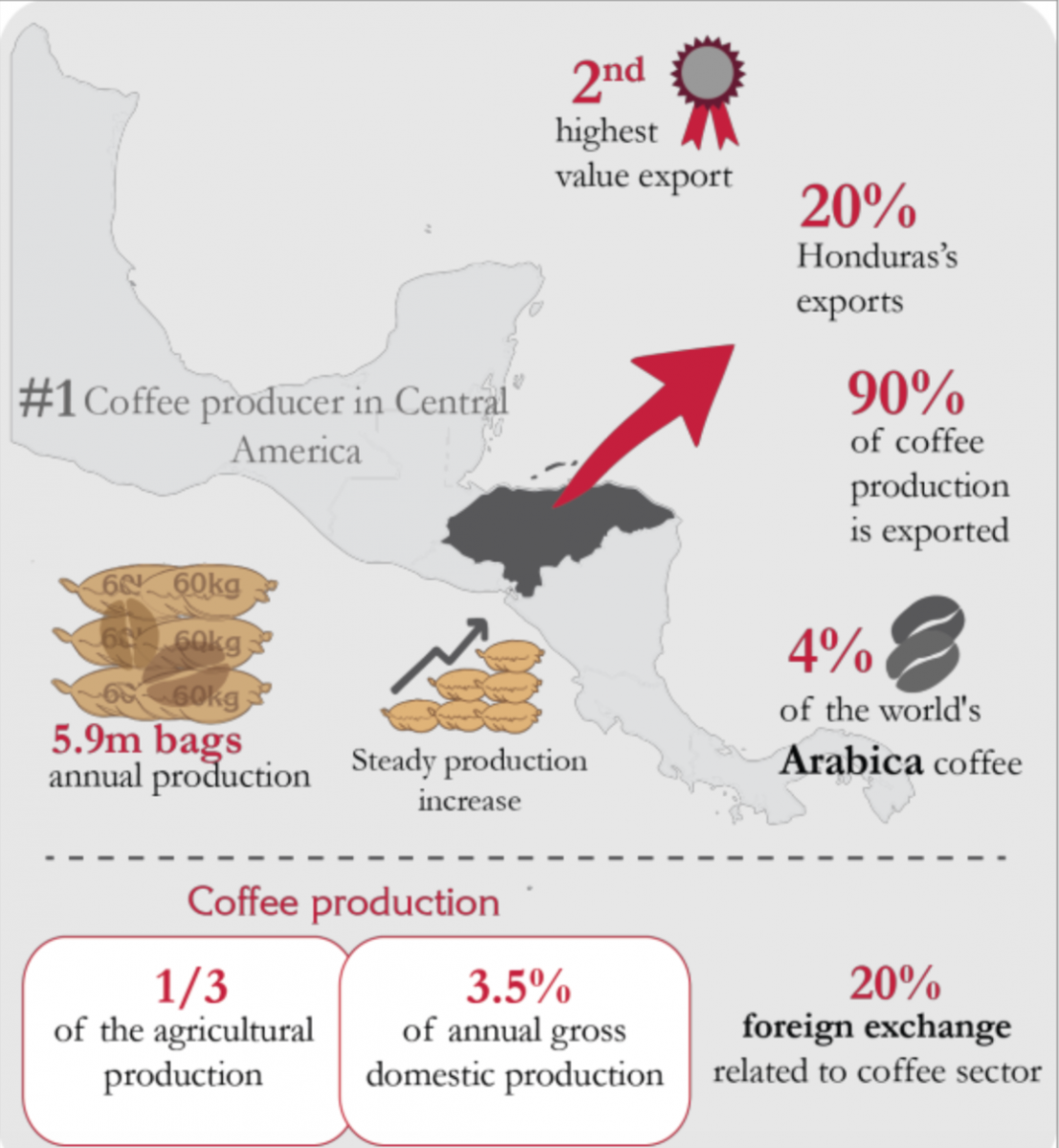
Engaging Farmers in the Process
The International Institute of Tropical Agriculture’s (IITA) Coffee Programme looks at a broad set of good agricultural practices (GAPs) and farmer ability to apply the whole suite of GAPs, including the introduction of specific climate smart practices. IITA utilizes two complementary approaches to engagement and uptake: Farmer Segmentation and the Stepwise Approach.
Farmer segmentation a combining quantitative and qualitative approaches, to understand the diversity of coffee farmers. In addition to looking at the on-farm resources, the approach also captures farmers' willingness to invest into coffee as their main cash crop. This diversity highlights differences in ability to apply CSA practices on their farm. Through understanding this diversity, extension services (and climate smart investment pathways explained below) can better target farmers according to their needs and aspirations.
The Stepwise Approach breaks down the full training package of CSA practices into more manageable subsets of practices that are tailored to particular geographies or sites. By breaking down the full set of site specific good agricultural practices into more manageable sets of site-specific climate-smart practices, the IITA team has developed an innovative investment pathway to make CSA adoption affordable for smallholder coffee farmers. Stepwise is easily adaptable to the varying needs and aspirations of coffee farmers and their ecological site differences and thus presents a contextually specific set of climate smart practices for each region.
IITA has conducted farmer segmentation and is training farmers on these climate smart investment pathways (CSIPs) using the Stepwise Approach and delivers training of trainers to impact partners (Olam and HRNS) who subsequently deliver the training to their farmers.
To learn more about the Coffee Program in Uganda see Improving smallholder farmer adoption of climate-smart agriculture practices and Redesigning Delivery: Boosting Adoption of Coffee Management Practices in Uganda: the climate smart investment pathway approach and the farmer segmentation tool. In its effort to develop low-cost, multi-purpose solutions to implement climate smart agriculture, IITA has also developed a Shade Tree Advice tool for both coffee and cocoa that maximizes tree-based ecosystem services while minimizing disservices.
These tools allow companies to use resources effectively while increasing adoption rates of CSA to improve farmer resilience.
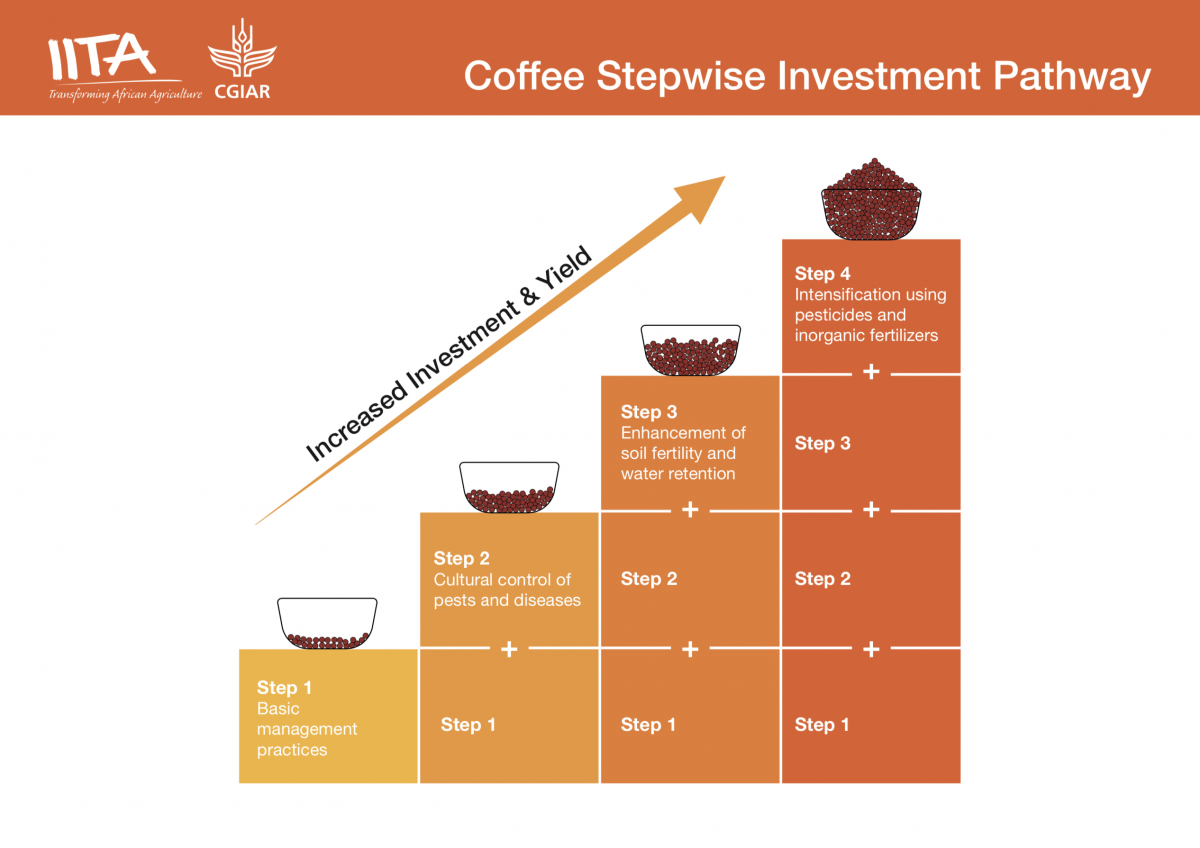
Initiative for coffee & climate and c&c Toolbox
In response to the needs of coffee farmers, the c&c toolbox was developed as an open online platform to effectively tackle climate change. The c&c toolbox is a compilation of tools, climate maps, case studies, guidelines and training materials that equip farmers and farming communities with valuable information. It provides a platform to exchange knowledge on known and innovative adaptation practices which are developed alongside some of the world’s leading climate experts and bridges the gap between science and farmer know-how. Currently 25 different adaptation and mitigation practices are online, with others being tested, including practices which go also beyond the farm level, e.g. solar energy/ heater/generator, reforestation, wastewater treatment, recycling, use of energy efficient cookstoves, domestic water infrastructure together with households and communities. By 2019, the c&c initiative will have reached at least 80,000 smallholder coffee producing households in Central America, Brazil, Tanzania and Vietnam.
Coffee roasters, traders and cooperatives can engage with the initiative for coffee&climate and the c&c toolbox in a variety of ways, by using it as a resource to gain more information about specific adaptation practices and how they could be used in particular sourcing regions, or by partnering with HRNS or a third-party to train extension agents, cooperative management and farmers in supply chains on the most cutting-edge climate adaptation strategies detailed in the c&c toolbox.
You can find location specific training manuals, for example Minas Gerais in Brazil, and the Central highlands Vietnam and regional case studies on field-tested adaptation practices. Finally, you will find short information sheets on individual adaptation practices to support trainings in all languages, for example: shade management including temporary shade (fast growing) for new or renovated coffee fields in all regions grafting arabica stock onto a root nematode-resistant Robusta rootstock in Trifinio in Honduras, installing Windbreaks in Minas Gerais, Brazil or using rainwater harvesting basins and conservation agriculture in Mbeya, Tanzania, among others.
For more information, explore the c&c toolbox and the c&c Training Manual, a step-by-step guide to support those who work directly with coffee farming families to support climate change adaptation.
The c&c toolbox can be used in tandem with other tools listed on this website. For example, HRNS has been working with WCR in Honduras and Guatemala to test different coffee varieties in field trials with different adaptation practices such as cover crops and temporary shade to further strengthen the plants and increase the climate resilience. c&c practices have also been used with the Stepwise Program developed by IITA to build resilience for coffee farmers in Luwero, Uganda in a program implemented by HRNS, read more here.
